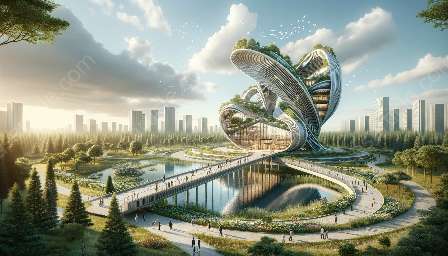Water supply and sanitation engineering is an essential and integral aspect of water resources engineering and general engineering. It encompasses a wide range of principles and practices aimed at providing clean water and effective sanitation systems to communities around the world. In this comprehensive topic cluster, we will explore the key components, challenges, and solutions related to water supply and sanitation engineering, offering a thorough understanding of its significance and real-world applications.
The Importance of Water Supply and Sanitation Engineering
Water supply and sanitation engineering plays a crucial role in maintaining public health and environmental sustainability. Access to clean and safe drinking water is vital for human survival, and proper sanitation infrastructure is essential for preventing waterborne diseases. Additionally, effective water supply and sanitation systems contribute to economic development and social well-being, making them fundamental components of sustainable development goals.
Water Resources Engineering and Its Connection to Water Supply and Sanitation
Water resources engineering is closely related to water supply and sanitation engineering, as it deals with the management, planning, and development of water resources to meet various needs, including domestic, industrial, and agricultural. The efficient utilization of water resources and the integration of sustainable water management practices are essential for ensuring reliable water supply and effective sanitation systems. By incorporating principles of water resources engineering, water supply and sanitation projects can optimize resource utilization and enhance overall system performance.
Key Components of Water Supply and Sanitation Engineering
Water supply and sanitation engineering encompasses a wide array of components, ranging from water treatment processes and distribution systems to wastewater collection and treatment. The key components include:
- Water Sources: Understanding and managing various water sources, such as surface water, groundwater, and rainwater, to ensure adequate and safe water supply.
- Water Treatment: Implementing treatment processes, including filtration, disinfection, and purification, to remove contaminants and ensure the quality of drinking water.
- Distribution Systems: Designing and maintaining distribution networks to deliver clean water to homes, businesses, and public facilities efficiently.
- Sanitation Infrastructure: Developing and managing sewer systems, wastewater treatment plants, and sanitation facilities to effectively manage and treat wastewater.
- Water Quality Monitoring: Implementing monitoring and testing protocols to assess water quality and ensure compliance with regulatory standards.
Challenges in Water Supply and Sanitation Engineering
Despite the critical importance of water supply and sanitation engineering, numerous challenges pose significant obstacles to achieving universal access to clean water and adequate sanitation. These challenges include:
- Water Scarcity: Addressing the increasing demand for water amid diminishing water resources due to climate change and population growth.
- Infrastructure Deficiencies: Upgrading and maintaining aging water supply and sanitation infrastructure to improve resilience and reliability.
- Water Quality Concerns: Addressing pollutants, contaminants, and microbial agents that compromise the quality of drinking water and pose health risks.
- Public Health Risks: Mitigating the spread of waterborne diseases through improved sanitation practices and access to clean drinking water.
- Sustainable Development: Balancing the provision of water supply and sanitation services with environmental sustainability and resource management.
Solutions and Innovations in Water Supply and Sanitation Engineering
Addressing the challenges in water supply and sanitation engineering requires innovative solutions and technologies to improve water management and sanitation practices. Some of the key solutions and innovations include:
- Water Recycling and Reuse: Implementing systems for recycling and reusing treated wastewater for non-potable purposes, reducing the strain on freshwater resources.
- Advanced Treatment Technologies: Integrating advanced treatment methods, such as membrane filtration and UV disinfection, to enhance water purification processes and ensure high water quality standards.
- Smart Water Management: Leveraging data analytics and sensor technologies to optimize water distribution systems and improve proactive maintenance practices.
- Community Engagement and Education: Empowering communities through education and awareness programs to promote water conservation, hygiene practices, and sustainable water use.
- Climate-Resilient Infrastructure: Designing and implementing infrastructure solutions that can withstand the impacts of climate change and extreme weather events to ensure continuous water supply and sanitation services.
Role of Water Supply and Sanitation Engineering in General Engineering
Water supply and sanitation engineering integrates various principles and concepts from general engineering disciplines, including civil, environmental, and mechanical engineering. The interdisciplinary nature of water supply and sanitation projects requires collaboration and expertise across multiple engineering fields to address complex technical challenges and ensure the effectiveness of infrastructure solutions. By incorporating general engineering principles, water supply and sanitation projects can benefit from innovation, efficiency, and sustainability, leading to long-term positive impacts on public health and environmental conservation.
Conclusion
Water supply and sanitation engineering plays a pivotal role in safeguarding public health, promoting environmental sustainability, and fostering socio-economic development. By addressing the challenges and leveraging innovative solutions, water supply and sanitation engineering contributes to the realization of essential human rights, including access to clean water and adequate sanitation. Through effective integration with water resources engineering and general engineering principles, water supply and sanitation projects can achieve holistic and sustainable outcomes, ensuring the well-being of present and future generations.

